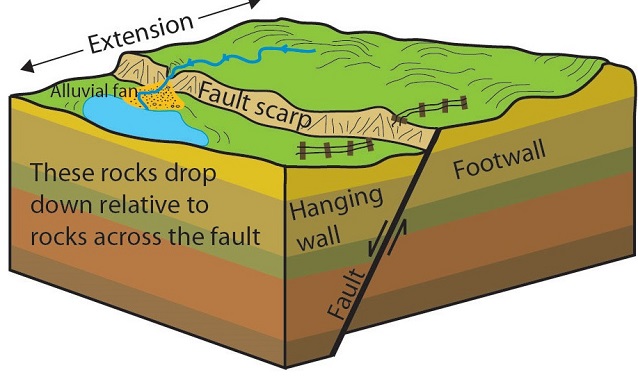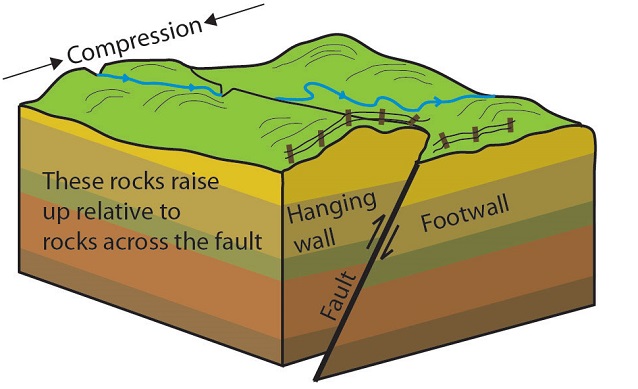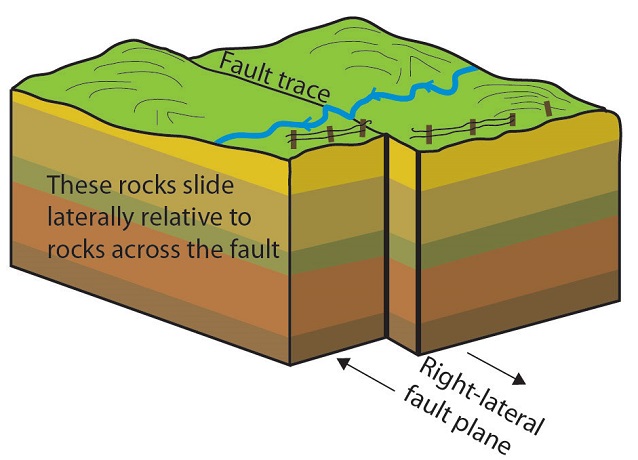Faults are cracks in the earth's crust along which there is movement. These can be massive (the boundaries between the tectonic plates themselves) or very small. If tension builds up along a fault and then is suddenly released, the result is an earthquake.
Fractures are simply cracks in the crust where there is no movement.
Faults are classified according to the direction of relative movement along the fault. The terms hanging wall and foot wall refer to the relative position of the plates after movement. Economic minerals often grow along faults, and these terms come from where a miner would stand, and where they would hang their lantern.
Normal Faulting

Trista L. Thornberry-Ehrlich, Colorado State University.
Normal faulting occurs when two plates move away from each other, causing one to slide down relative to the other.
Reverse/Thrust Faulting

Trista L. Thornberry-Ehrlich, Colorado State University.
When the plates are compressed, or pushed together, reverse or thrust faulting occurs. This means that one plate was pushed up onto another plate.
Strike-Slip Faulting

Trista L. Thornberry-Ehrlich, Colorado State University.
In strike-slip faulting, the two plates are moving horizontally past one another like cars going in opposite directions on highway.
Last updated: April 22, 2020
